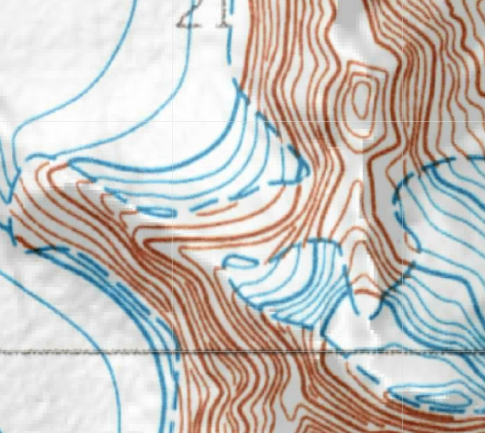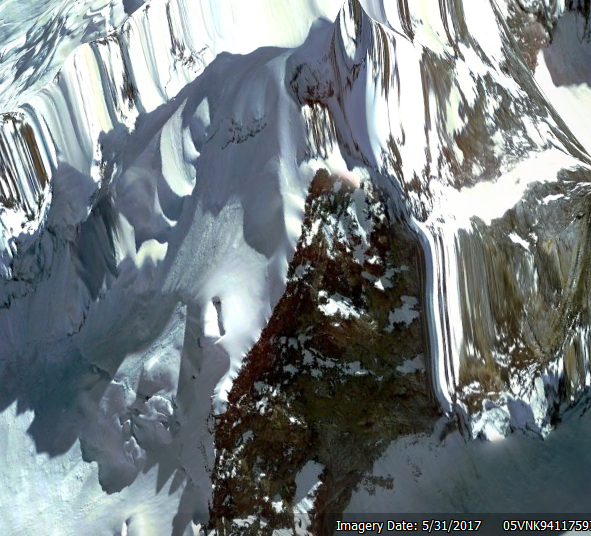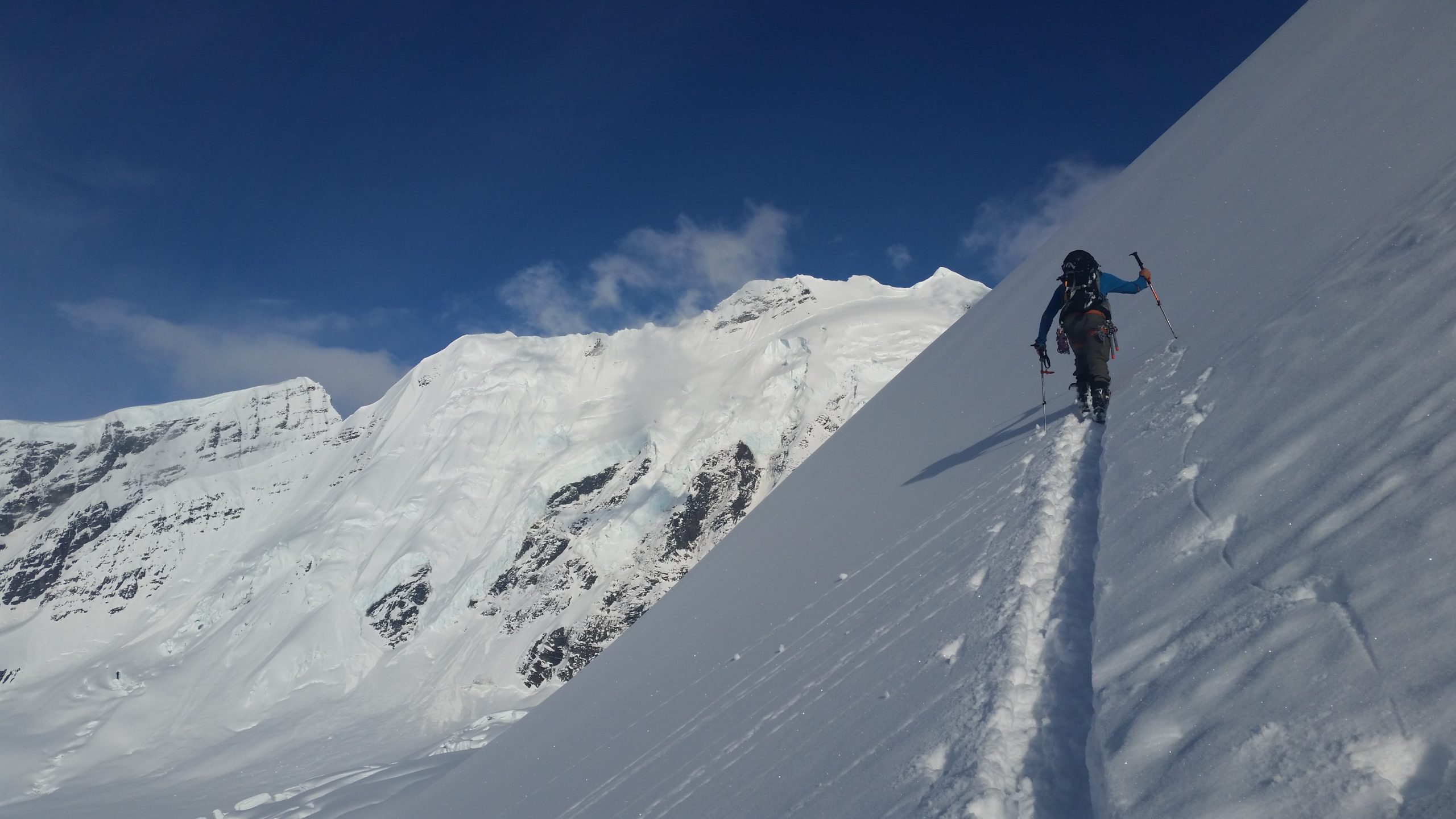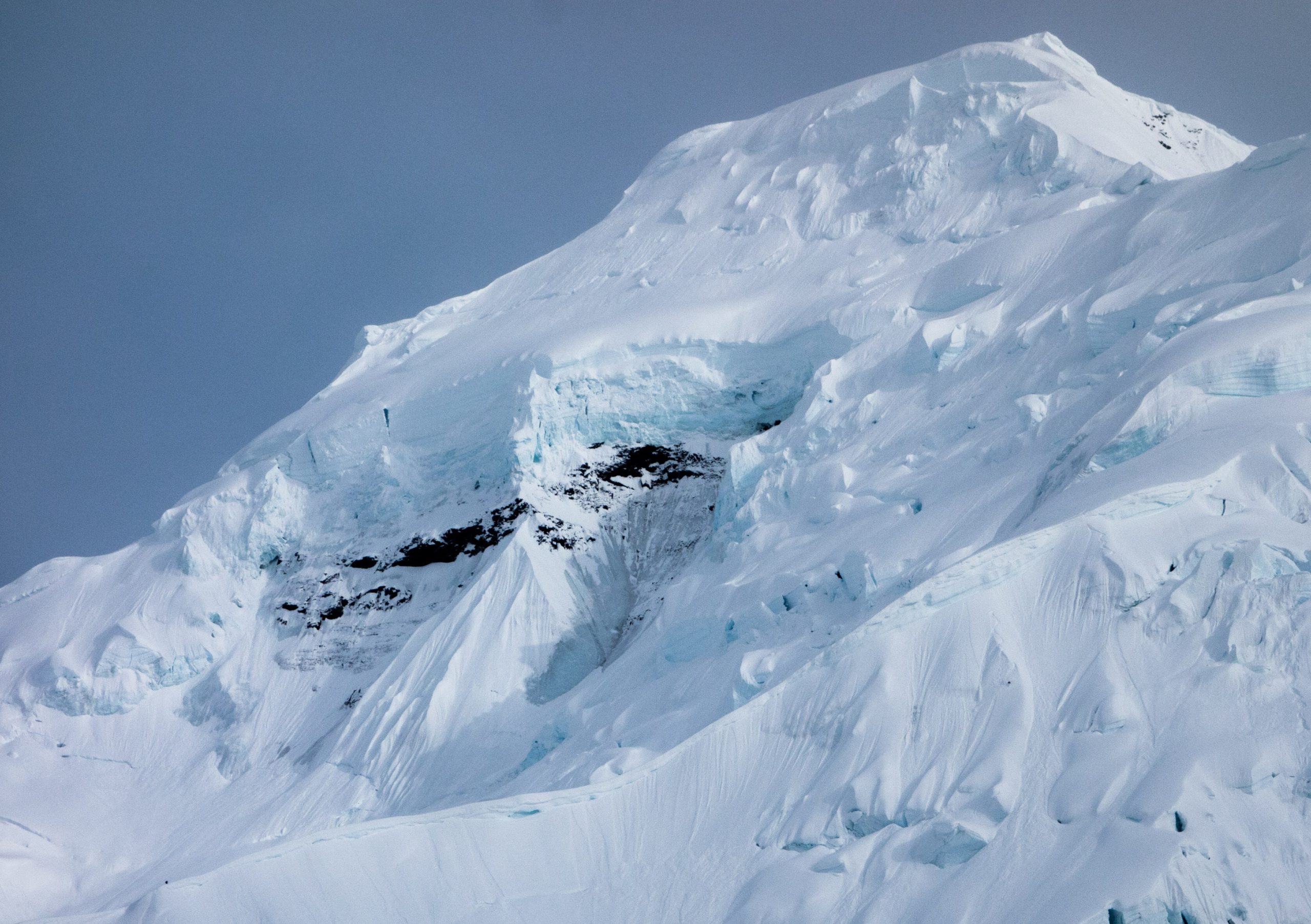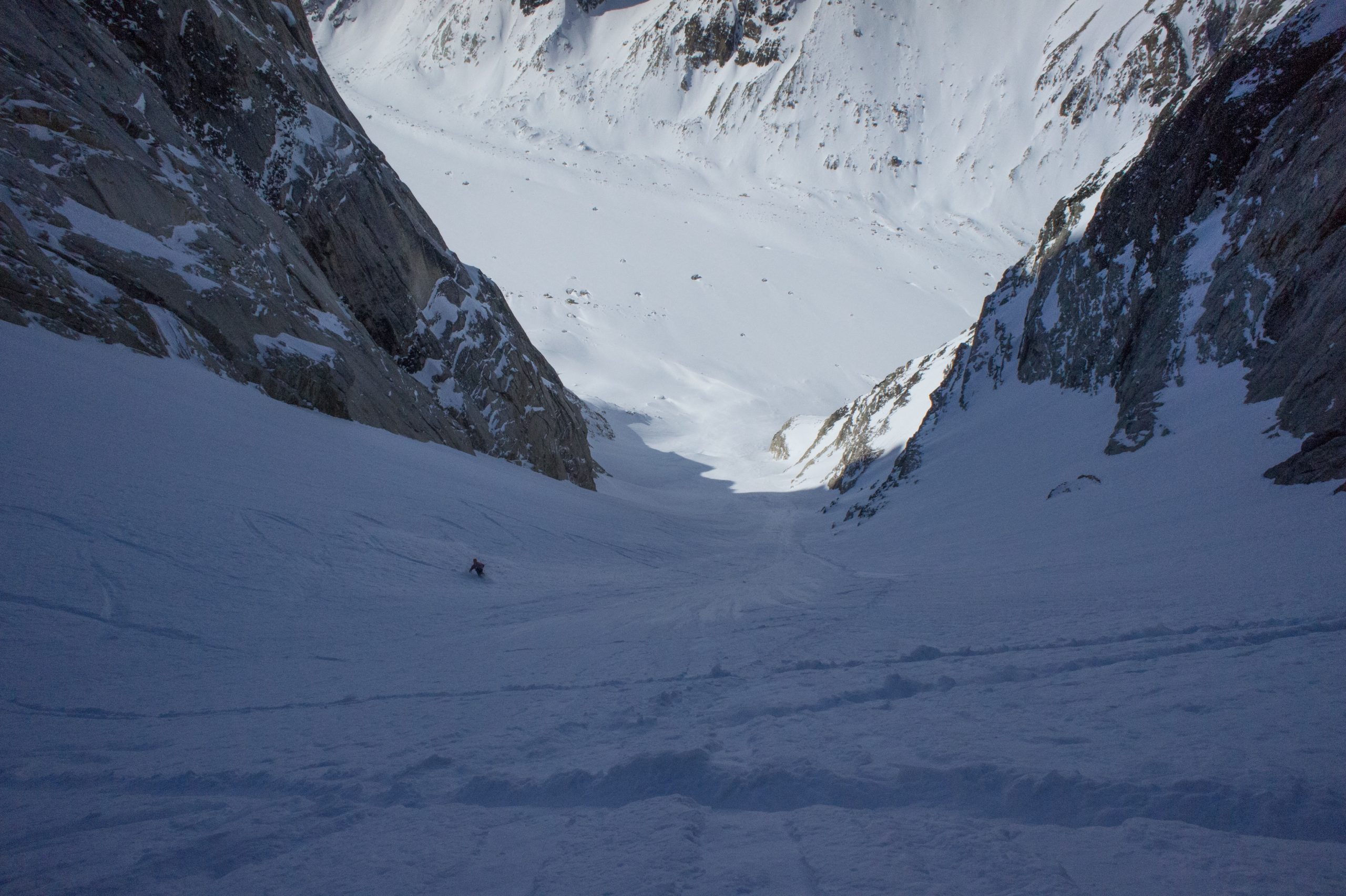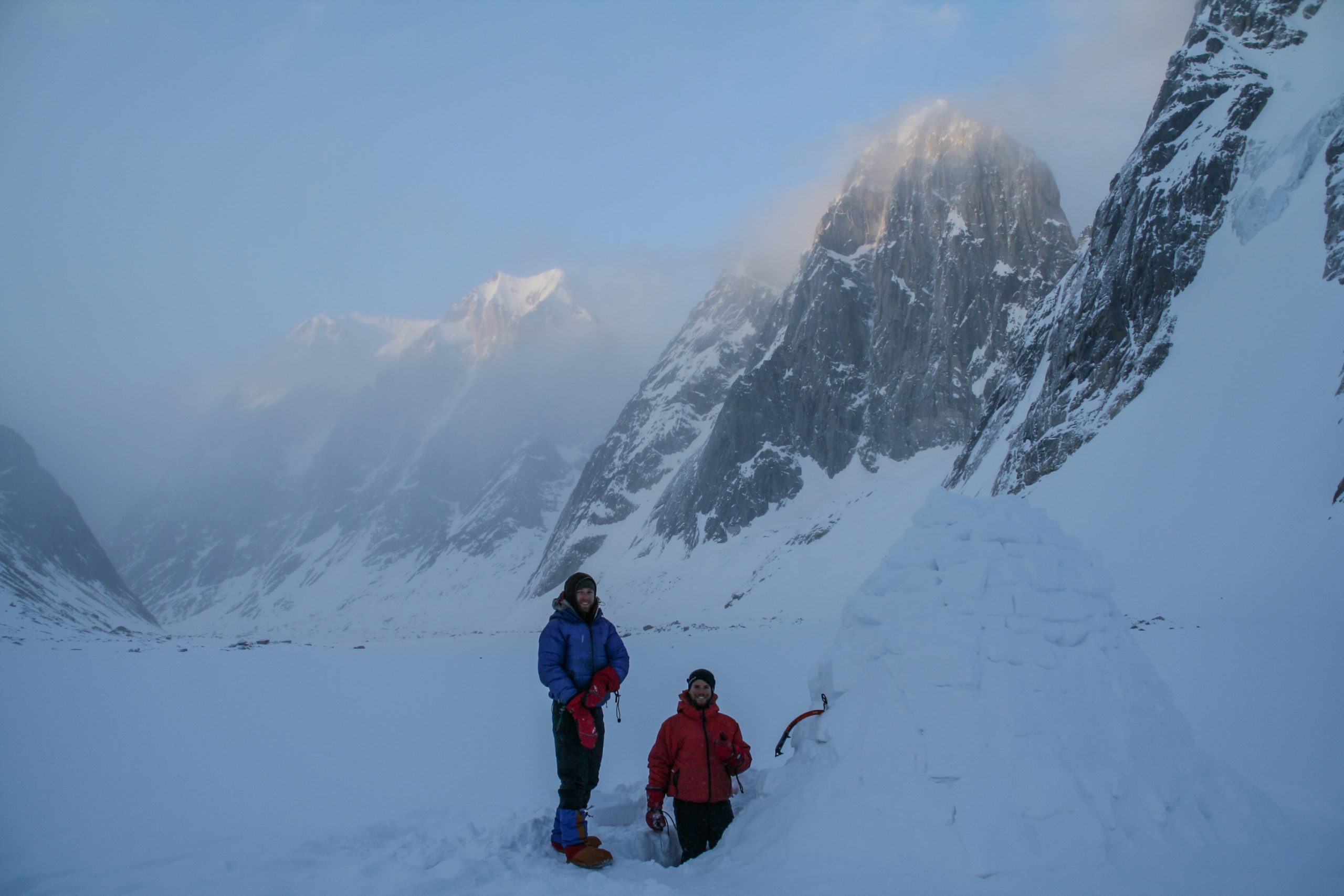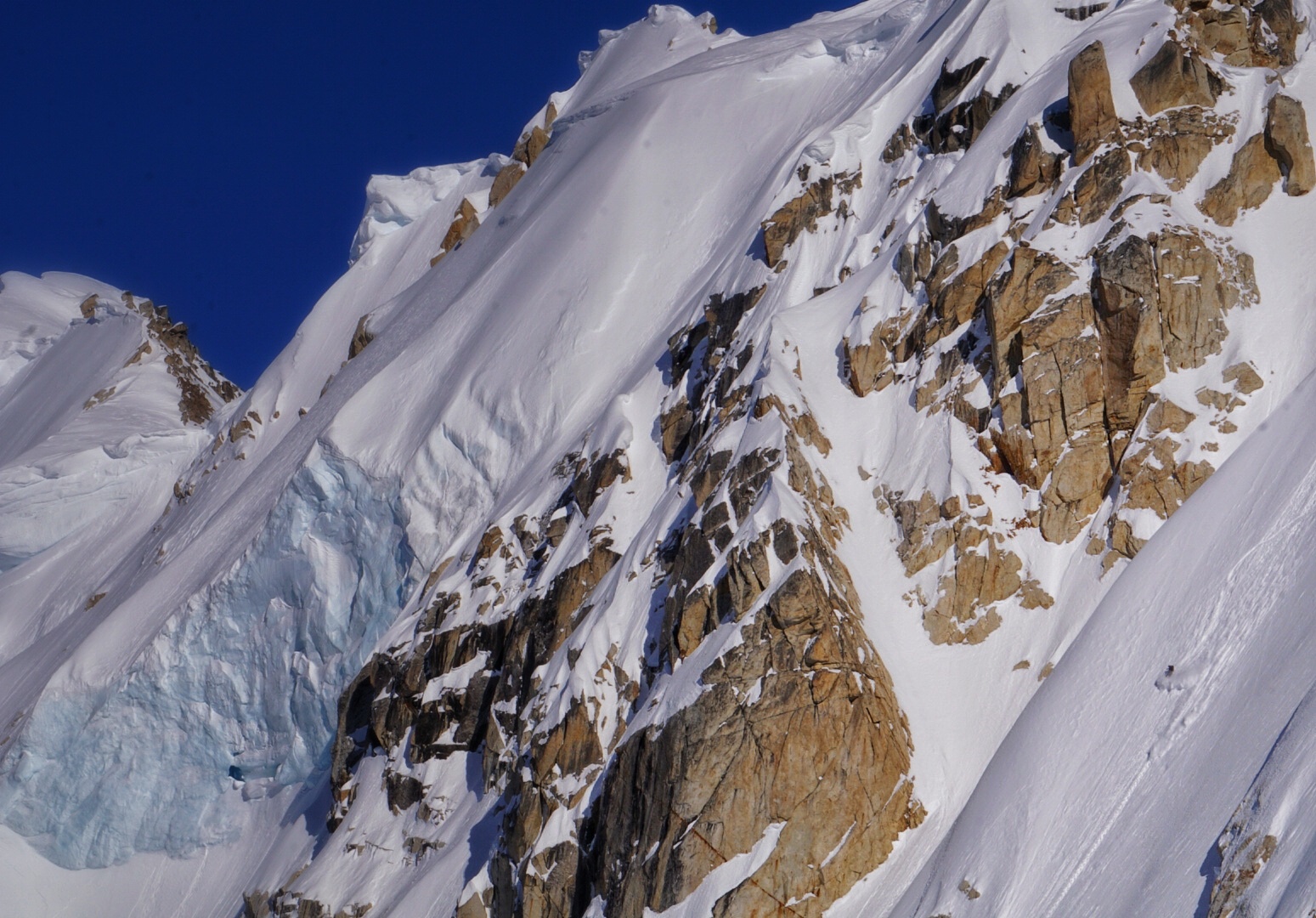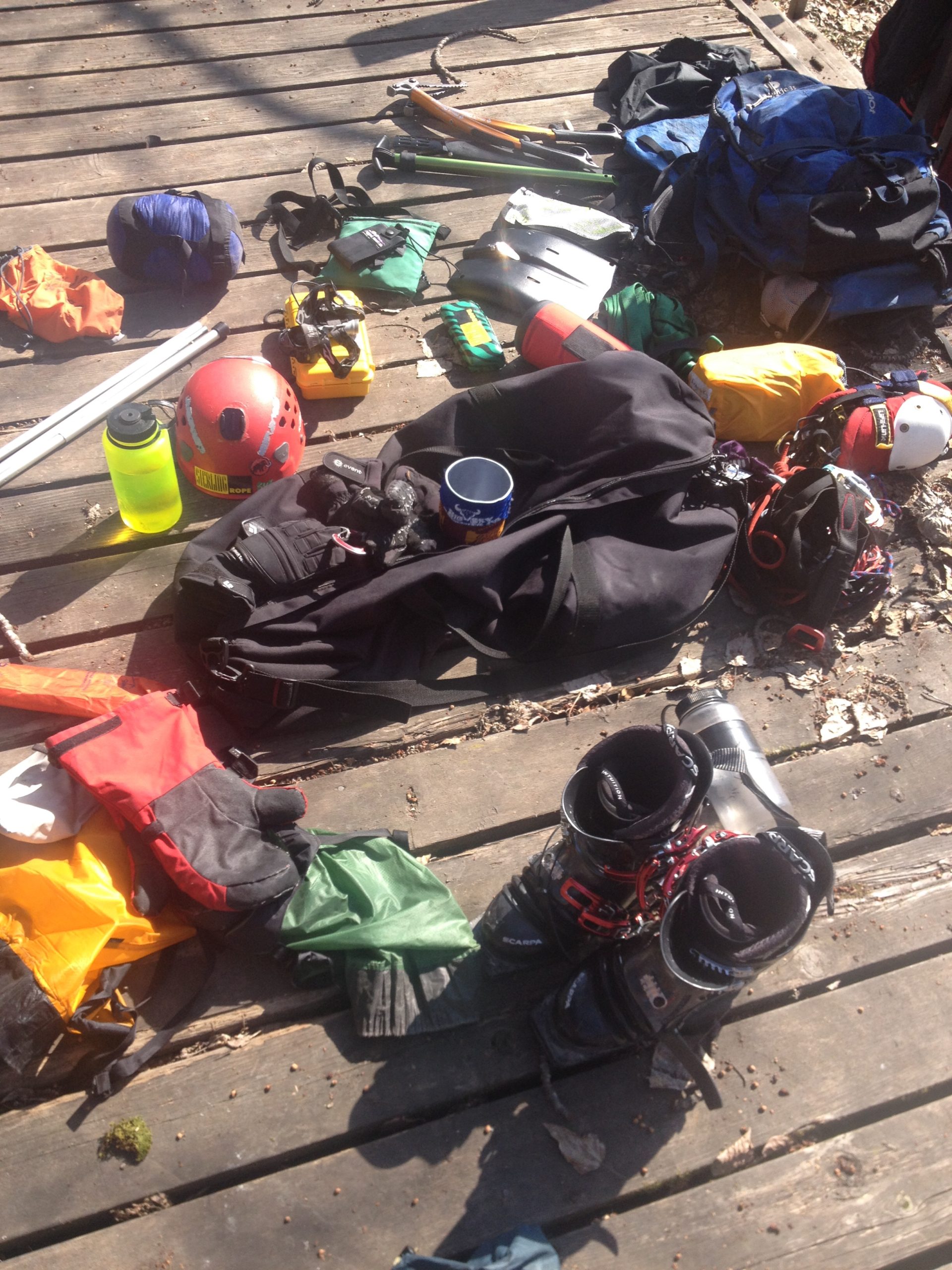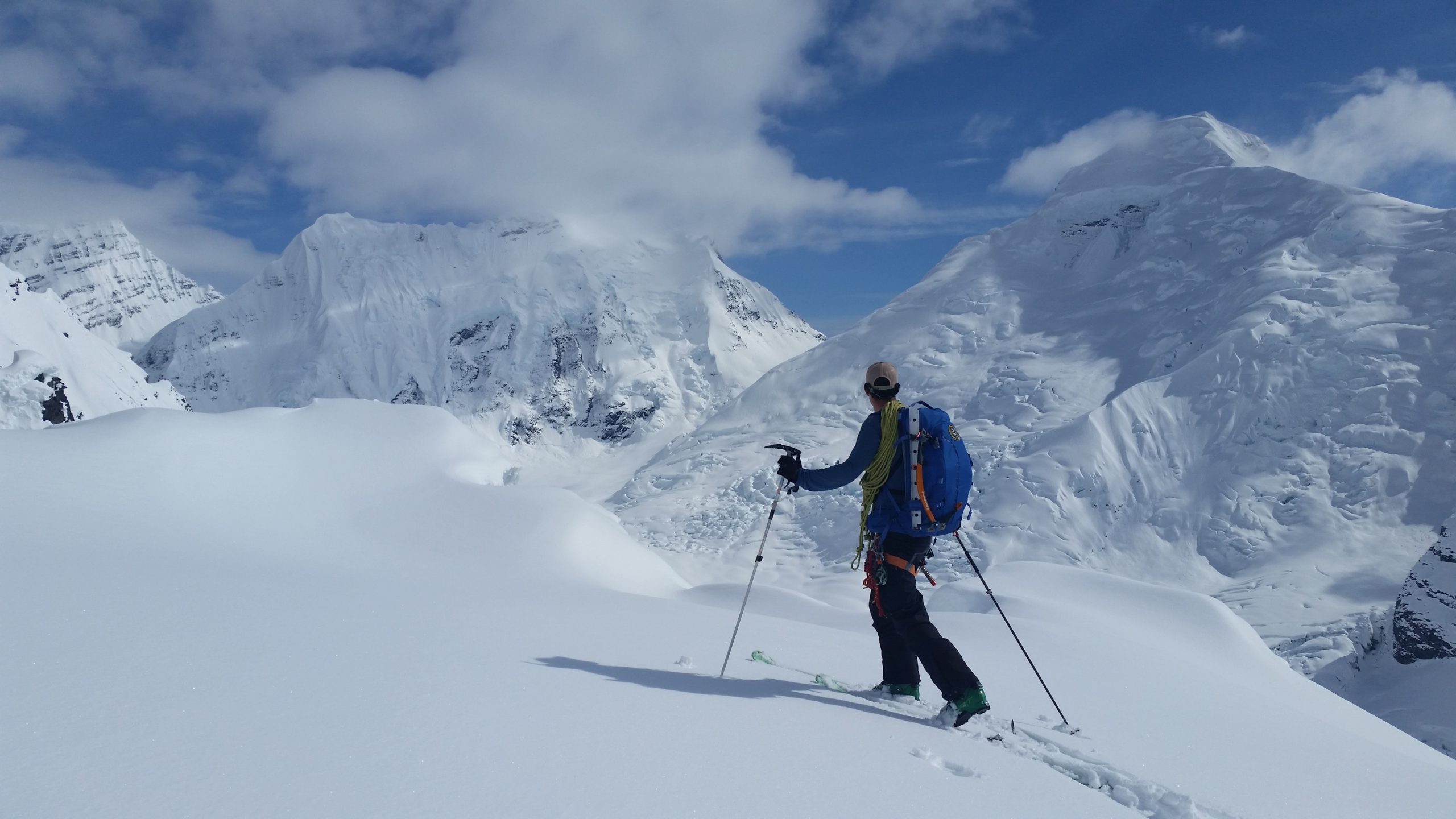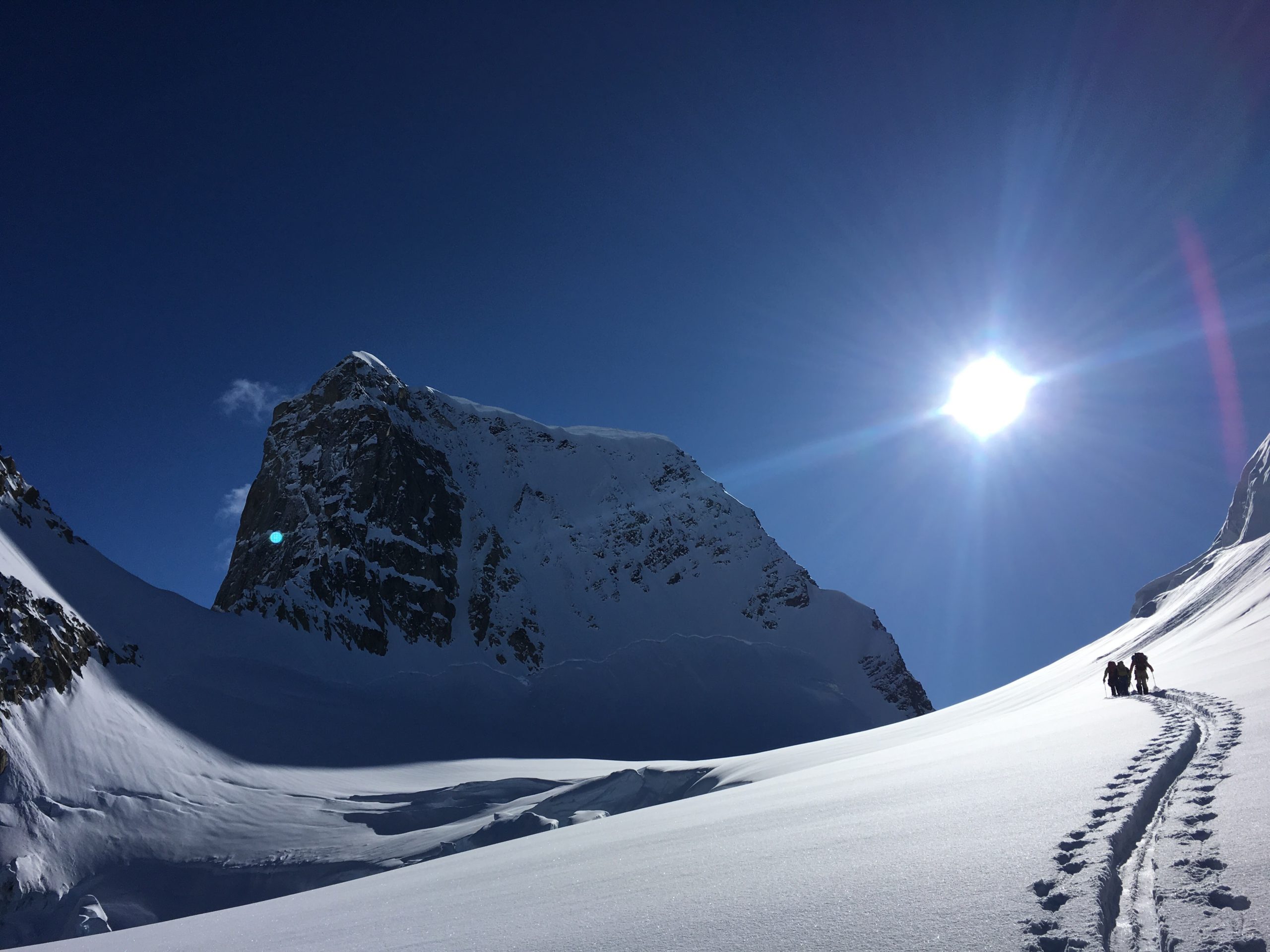
25 Tips for Your First Ski Expedition
Share this Post
After nine years and several hundred combined expedition days, V-Team Ambassadors Aaron Diamond and Ty Guarino wanted to put together a body of information that was tailored to anyone looking to go on their first ski expedition; specifically, Alaska-style basecamp expeditions that maximize fun and minimize discomfort. Most of this information is universal for a ski expedition, but a few tidbits are specific to the use of fixed wing plane supported trips that are special to the AK or Canadian mountain ranges. From Aaron and Ty’s expedition experience, the two of us have whittled down the 25 most essential tips we wish we knew going into our first trips…
1. Trust the locals
You’re likely new to this area, therefore local knowledge and first-hand information about routes and conditions can be your most vital resource to set you up for success. People like rangers, guides, or porters, or in places like Alaska, your pilot will generally have the best and most up to date information. Ask questions.
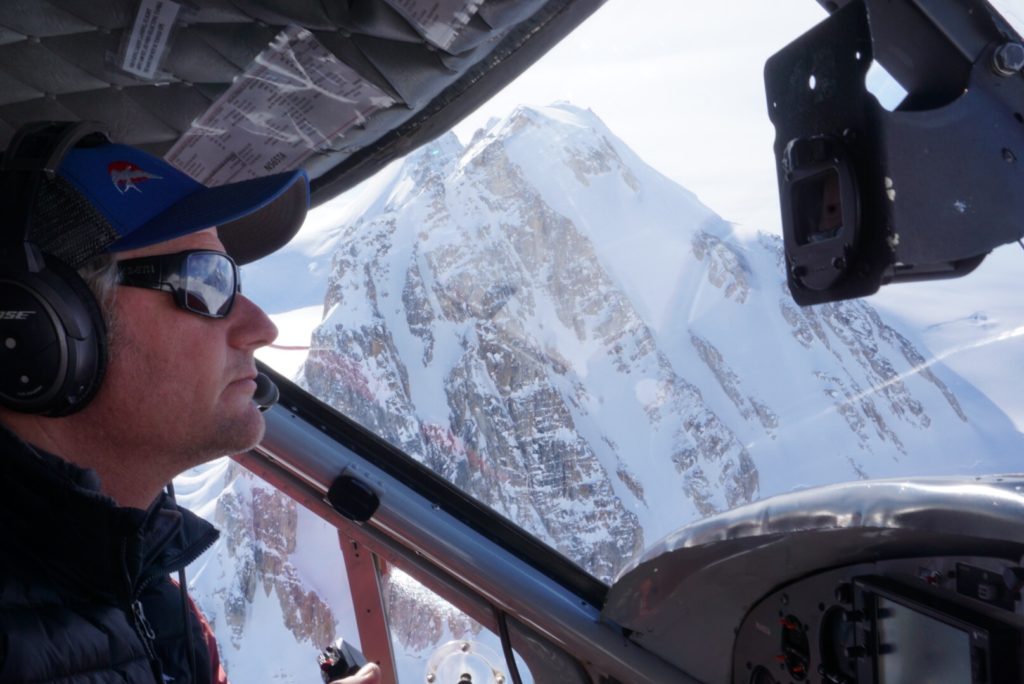
2. Do your homework (Google earth, Caltopo etc.)
This one will save you time and money and help you take advantage of the nice days for skiing instead of scouting. Resources like climbing guidebooks, American Alpine Journal articles, Google Earth (download the pro version) and Caltopo or other mapping sites are good places to start. This will give a start on where to look on your flight in.
Different views for a topo map, Google Earth, and real life.
3. Learn how to fix your stove
For most cold weather cooking I prefer a white gas stove. These things do need occasional maintenance or repair. Spend some time before the trip disassembling and reassembling both your stove and the pumps. You can do a lot on an expedition with makeshift or missing gear but having a competent and masterful stove scene is absolutely essential. Many experienced expedition skiers have specialized stove boards that reflect heat and secure stove bases in interest of saving fuel and reducing the chances of stoves melting your cooking platform or kitchen tent.
4. Dedicate a special water shovel
This one is easy. Bring a special shovel or dedicate one of your avalanche shovels for water only. Don’t use this shovel for anything other than collecting snow for water. Use the other shovels for things around camp. Long story short. The snow in you camp (kitchen included) gets somewhat contaminated by your boot and the bathroom. If you use a camp shovel for water, there’s a chance you’ll end up sick. Voilé XLM shovel is perfect for this.
5. Bring a real first aid kit
In most cases, you are going to be on your own. Self-sufficiency is key on a ski expedition. Your first aid kit should include a few Rx drugs (consult your doc) to deal with things like pain, constipation, diarrhea, nausea, altitude and infection as well as a substantial trauma kit to deal with bleeding and orthopedic injuries. Just like at home, rescue could take a few days in poor weather so make sure you have enough to sustain care.
6. Don’t leave a messy camp
You never know what the weather is going to do while your sleeping, out skiing, or even cooking. Get in the habit of closing tent doors, leaving gear and food bags piled together and keeping anything that can blow away clipped in. A handful of the small “not for climbing” carabiners work great for this. If you don’t, you’ll feel pretty helpless in your down booties watching your sleeping pad blow down the glacier never to be seen again.
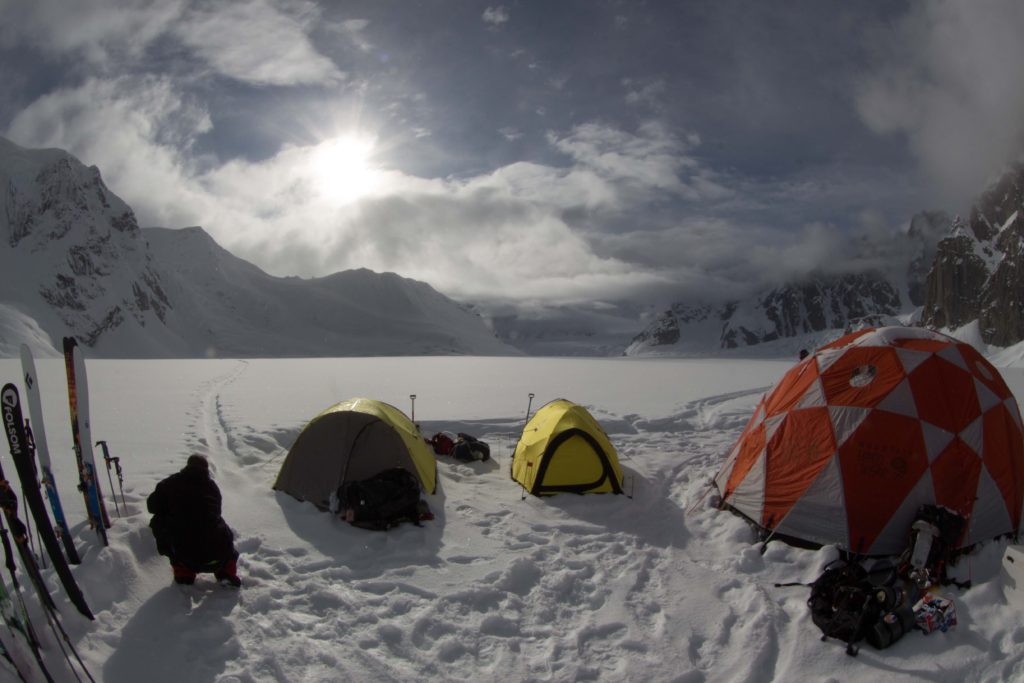
7. Sleep with anything you don’t want frozen
Sometimes this feels like literally everything you brought on the trip: your boot liners/footbeds, your skins, extra cloths, water bottle, pee bottle, phone, sunscreen, glove liners… the list goes on and on. Depending on the climate and location of your ski expedition, you may be able to forgo some items, but some others are always essential. Regardless, you will always be happy with a dedicated pair of warm and dry sleeping socks that most people refer to as their “sacred socks.”
8. Test your solar pre-trip
Your solar and battery system will power all your electronics. In my experience, a relatively small solar panel can power fill a pretty large battery and many electronics will not charge directly off a solar panel. Avoid using AC chargers and inverters if possible, as some energy will be lost during the conversion to AC power.
9. Pack out your runway for pickup
If the weather is in and out your pilot won’t even try to land if they can’t see where they’re going. Duffel bags, sleds and wands along a ski-packed runway will greatly increase your chances of getting out in marginal weather. Each pilot likes things a bit differently so ask for specifics. When in doubt, make it bigger.
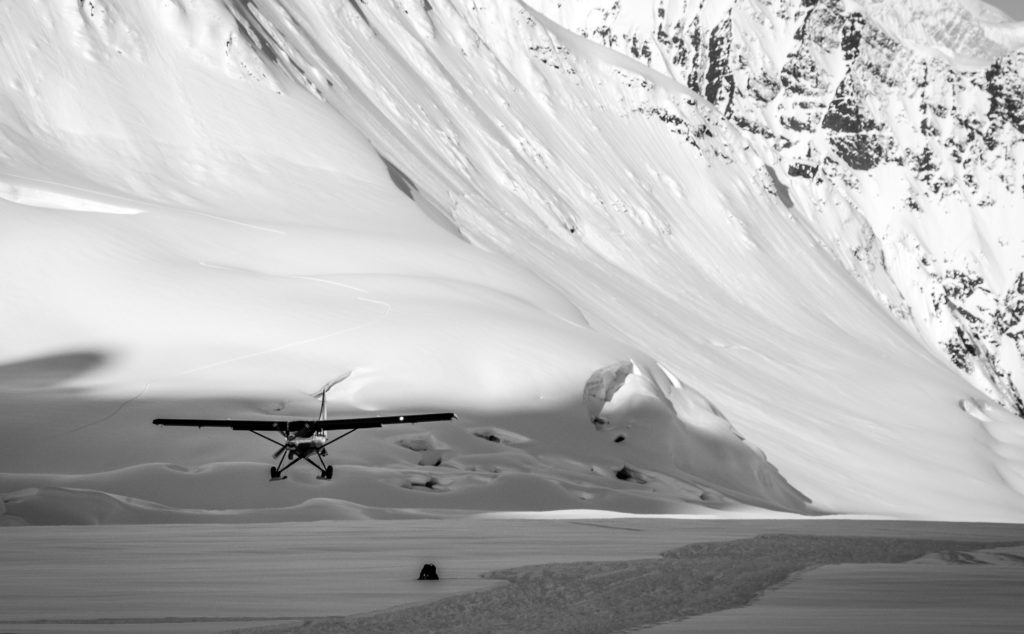
10. Prepackage all your food
This might take almost a full day before your trip and will use a lot of Ziplock bags (avoid the slider tops). Put all the ingredients and directions for each meal in an individual bags. Remember, everything can freeze, everything will freeze.
You don’t want to have to do this! This photo is from our first ski expedition to the Revelation Mountains. That’s ground beef. We clearly didn’t spend enough time at home repackaging our food.
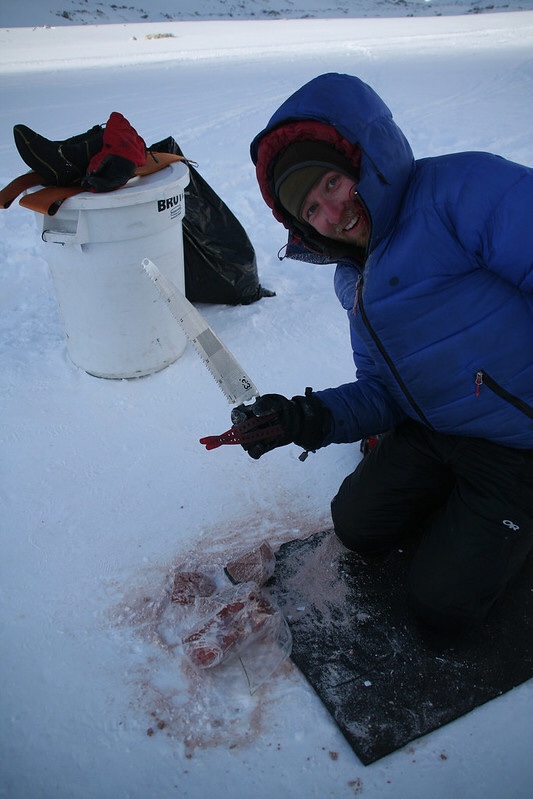
11. Use a checklist
There are literally hundreds of things to remember while packing your ski expedition. Checklists help with everything from gathering all the group equipment to the little details like making sure the directions to the no-bake cheesecake make it in the right place. I use Google Sheets to create a checklist for all the group gear and shopping lists and a small write-in-the-rain notebook for all my personal checklists.
12. Pick your partners wisely
Sometimes your ski friends are actually poor expedition partners. Pick people that can and will serve well in multiple roles: risk managers, navigators, cooks, roommates, decision makers, snow scientists, rope guns, billy goats, master repair persons, trail breakers, jokesters etc. If you want to be a valued member on an expedition, try to acquire top notch skills in all the previous disciplines.
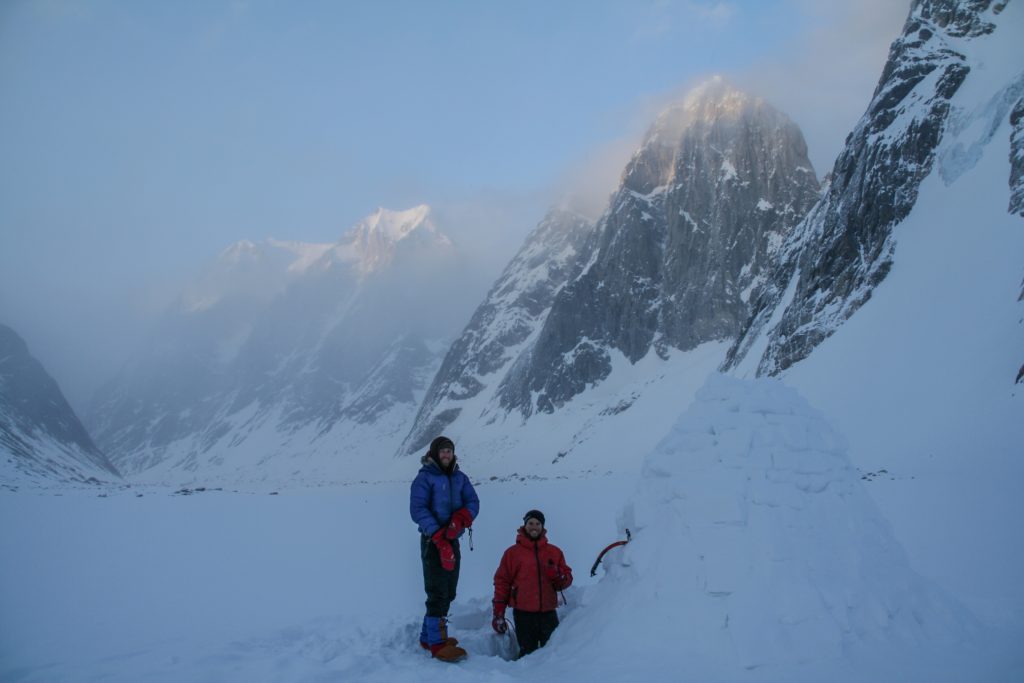
13. Don’t build snow walls (unless you need them)
Snow walls collect wind transported snow and most days you don’t need them. I build walls when the wind is forecasted to reach over 30mph.
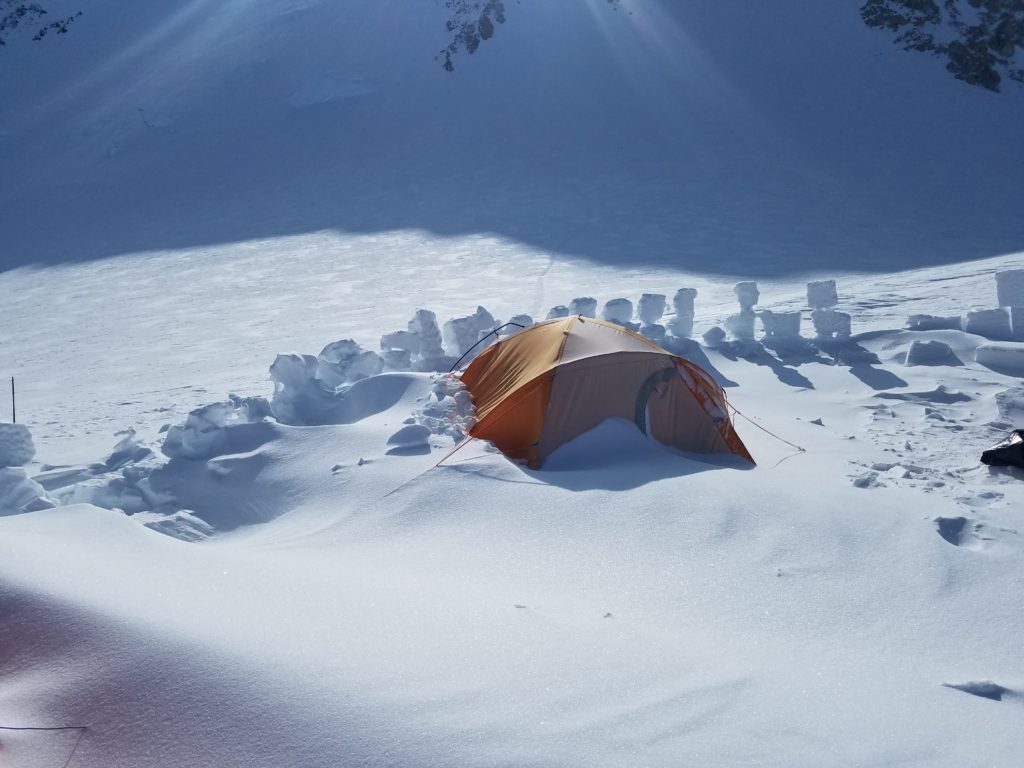
14. “Don’t be too lazy to do things the easy way”
A sentiment that one of my first expedition partners, Adam Fisher, shared with me on a trip to the Revelations Range in AK. It essentially means that you need do things as they come up and motivate to take care of them before they become real problems. Things like: releveling your kitchen when it gets sloppy, refilling the fuel bottles each night before you go to bed, inventorying the food every few day, doing repairs on clothes or tents on sunny high-pressure days, etc. Expeditions are so much about the small details that tend to pile up. If you address them in the moment, everyone will have a better time.
15. Don’t be afraid to car camp (so to speak)
If you won’t be moving your basecamp, don’t be afraid to bring a few things you might not normally associate with “expeditions.” A real camp chair, speakers, extra fuel, real (not dehydrated) food, etc. add a ton of comfort to things around camp.
16. Bring ascension plates/verts
Although Verts can be hard to get your hands on these days, Billy Goat Plates are an excellent option that work well and are still available. Few ski mountaineering trips need plates as badly as the AK or Canadian ranges. If you don’t see the need for them, think long and hard…
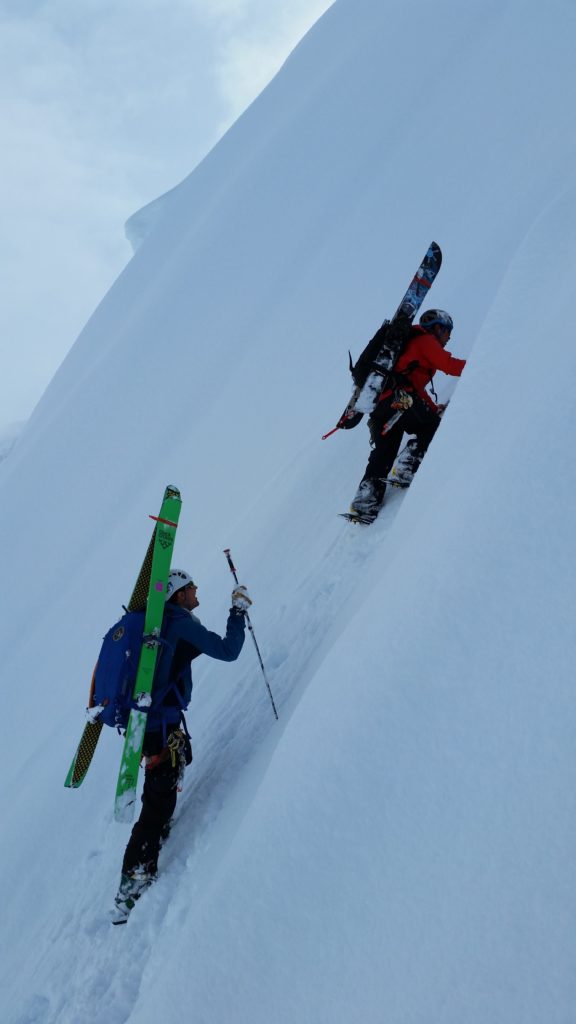
17. Bring a painter’s pole for your kitchen
Replacing the standard pole in your mid with a 6-12ft painter’s pole gives you more space to move around by removing the need for a big block of snow to hold the shorter pole. It is also adjustable, allowing you to change the height when your camp snow melts or settles.

18. Probe your camp
Glacier camping 101: don’t camp under overhead hazard of avalanches or seracs, and make certain your camp location isn’t sitting on top of an open crevasse monster ready to swallow you after one wrong step.
19. Pack for the plane (or transportation to destination)
Sometimes the weather isn’t great, and you’ll spend some time waiting to fly out. In a short weather window, the pilot is going to fly whoever is ready first so stack the odds in your favor. Leave you ski clothes, boots, camera, and anything you need for the flight in a separate bag along with clothes for a few days in town. That way when they tell you to get ready you won’t have to dig through a 100L duffel bag looking for your ski pants.
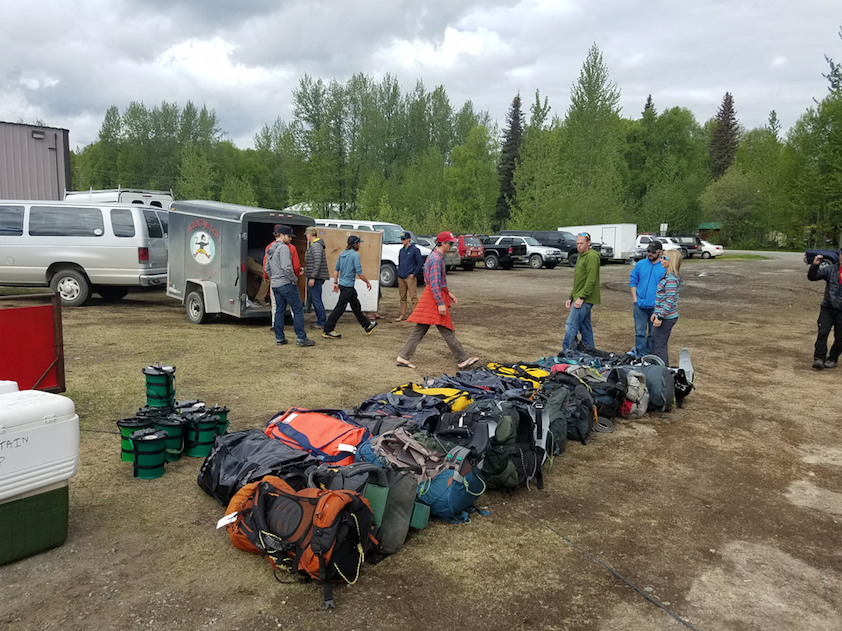
20. Outwork your partners
One of the notorious and classic ways that expedition psych breaks down is the feeling of unfair responsibility distribution. Even if it is your first ski expedition, you already know how to operate a shovel, maintain and spread a positive attitude, and how to melt snow into water on a stove. Even it is the easiest task possible, everything on an expedition takes time and energy. You want to be the teammate that is lifting others up, not draining the batteries.
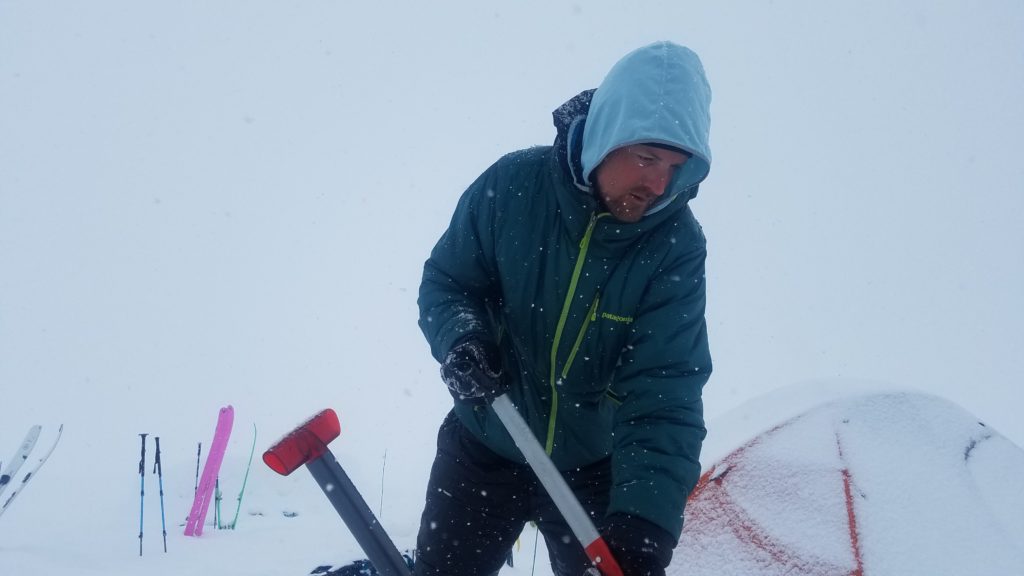
21. Bring a real repair kit
Take time to assemble each of these based on previous experience, advice from others and suitability to everyone’s kit. Unfortunately, sometimes you might need to bring more repair items because bindings, skis, and boots don’t overlap or share parts. Do the best you can to bring a spare set of skis that helps everyone out or have a plan for when necessary equipment fails.
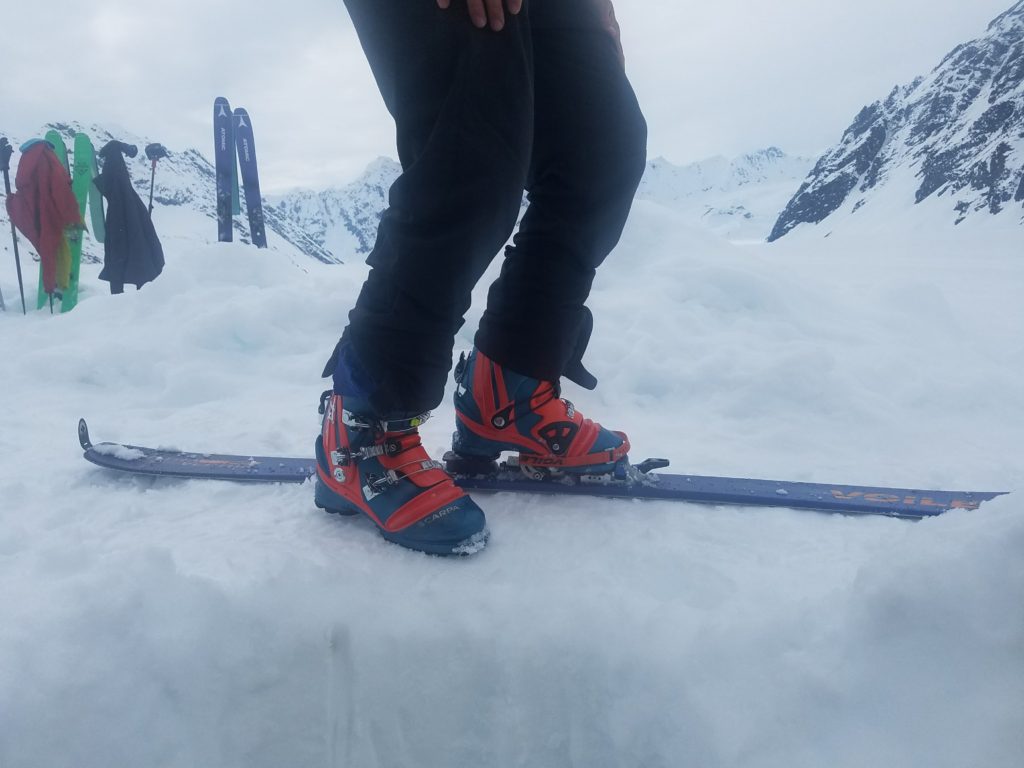
22. Bring two types of SAT communication (SAT phone, In-reach) and make sure you can charge them
Satellite communication has come a long way in the last 10 years. Satellite texting is a great way to stay in touch with loved ones, and it makes for a great back up (redundancy!) if you can’t get a SAT phone call out. Additionally, make sure you can charge it in case you are dealing with a rescue or complicated weather that requires you to use your communication devices more than you were planning.
23. Bring a real camera that takes good photos
I regret not taking a real camera on ski expeditions earlier in my career. Quality photos from previous expeditions go a long way when acquiring sponsors or financial help for future expeditions.

24. Bring a book, or digital books/movies
So much of expedition time is spent sitting out storms in the tent. Half the battle is taming the boredom while the other half is motivating yourself to get out and take a leak. Make sure you have a means of entertainment if you end up stuck in the tent for days… maybe even weeks depending on your luck.
25. Use boots that have at least 30-40 days on them and err on the side of comfort fit
As long as your feet are warm, dry, and can ski with relative control, you can conquer the world. Or maybe just the powder in front of your camp…
Share this Post
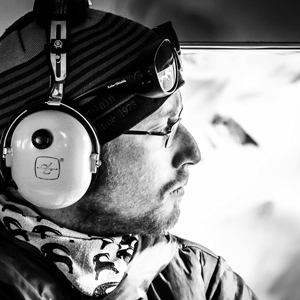
Location: Jackson, WY
Top Gear Picks: Revelator 162cm / Spartan 162cm
Instagram: @aarondiamond13
Aaron Diamond is an AMGA Certified Splitboard Guide and avalanche educator based in Jackson, Wyoming. He guides year round for Exum Mountain Guides and has guided technical ski and snowboard descents on various Teton summits including the Grand Teton, Middle, Teton, Nez Perce, and Mt Moran. In the summer months Aaron works as an alpine climbing guide on Denali and throughout the Greater Yellowstone Ecosystem. He is alway psyched to share his backyard with experienced and new backcountry travelers
In his free time Aaron enjoys spending time in the splitboarding in the Tetons, or exploring the lesser known areas of the Alaska Range with his friends. He has first descents in the Tetons, Andes, and Alaska Range, including unrepeated splitboard descents of the Ramen Route on Mt Hunter (14,573ft), Mt Foraker’s Sultana Ridge (17,400ft), The Fat Calf Couloir on Pico Polaco (5995m) and the SE Face of the Gilkey Tower (12,320ft).

Location: Bozeman, MT
Skis: V8 186cm / SuperCharger 178cm
Website: www.TelemarkTy.com
Instagram: @ty.guarino
Ty is a career Mountain Guide and Ski Patroller currently working for Exum Mountain Guides, Beartooth Mountain Guides, and Bridger Bowl Ski Patrol. He is an AMGA Certified Ski and Rock Guide, and plans to take his last exam next September to complete his IFMGA accreditation. Originally from southern New Hampshire, Ty developed his passion for Backcountry skiing on the eastern flanks of Mt Washington in New Hampshire’s Presidential range. Currently Residing in Bozeman Montana, Ty skis as much as possible in and around the greater Yellowstone ecosystem. Although Bridger Bowl is his home mountain, Ty likes to explore other skiing venues including Alaska, South America, New Zealand, and New England.




